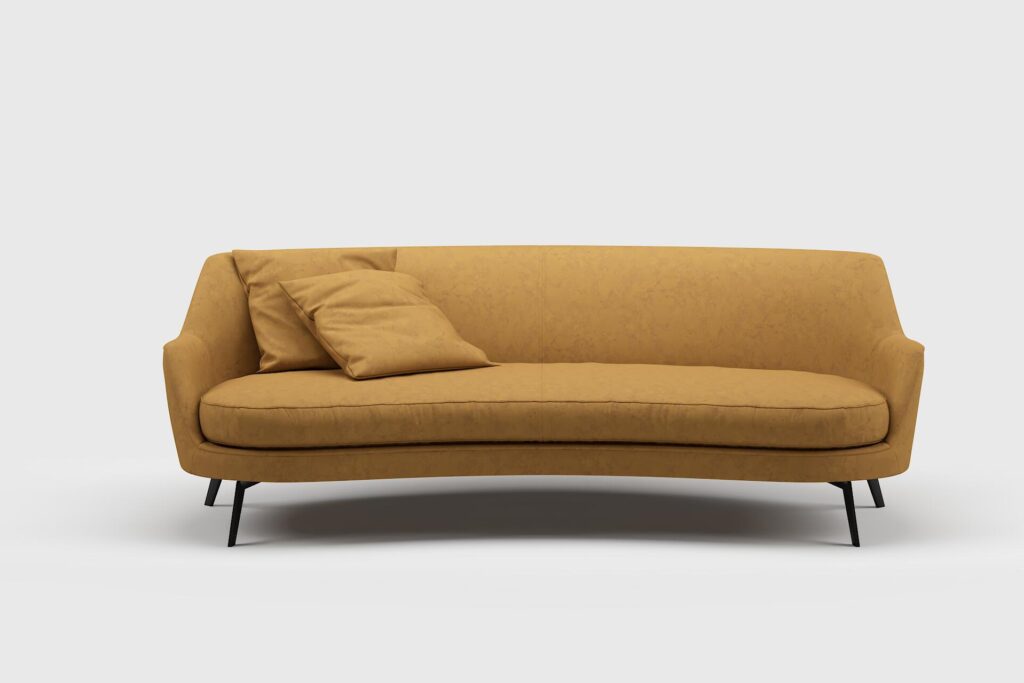Digital prototyping: the future of sofa design
When it comes to creating new furniture designs, building a prototype has always been a critical part of the process. When a new sofa or armchair design is developed, the convention has always been to make a physical example of the proposed product before it gets the green light for production.
But, as with many areas of our lives, technology has moved on, and digital techniques are bringing enormous benefits in terms of sustainability and cost savings.
Here, we look at the rise of digital technology in furniture manufacturing and how it can benefit the planet, the product and the customer.
3D MODELLING TECHNOLOGY FOR FURNITURE
In an increasingly competitive market, creating a prototype of a proposed furniture product is more important than ever. It can help avoid mistakes and significantly reduce costs. But the new way to build a prototype of a sofa, for example, does away with the idea of making an actual, physical version of the new design.
Instead, designers are now utilising cutting edge technologies to create life-like, digital versions of their creations. So what is 3D digital visualisation? It's the art of creating three-dimensional, digital models. This innovative technique allows manufacturers to test out and rework their designs virtually.
It also enables a more direct and quicker exchange of ideas, which is particularly useful when staff working on the plan in different locations or even other countries.
Related read: Why architects and interiors designers should care about digital visualisation
THE BENEFITS OF RAPID PROTOTYPING
Through 3D digital modelling, companies can cut costs by removing the need to create a physical prototype. Not only can they save money on the cost of materials, but savings can also be made in relation to the time spent building physical prototypes.
In the case of our FibreGuard fabrics, our innovative Twinbru product enables customers to access an extensive library of 3D digital fabrics in the form of hyper-realistic renders. These digital fabrics can then be dropped into an interior designer's 3D render, for example, to give an accurate representation of colour and texture.
This process of 'digital twinning' dramatically cuts down on waste because of the reduction of the use of physical fabric samples.
Waste is also significantly reduced with digital prototyping because fewer real-life materials are used if no physical prototype is being made. This process also serves to further reduce a company's carbon footprint because materials and staff no longer need to be transported to a specific location to create a physical prototype.
With growing awareness of sustainability, this aspect of rapid prototyping is particularly relevant.

Part One: Consumers, technology, and COVID-19 are driving change in the textiles industry
Part Two: Innovation, digital technology, and our need for a more sustainable textiles industry
Creativity is another winner here. The fact that the worlds of architecture and interior design can now utilise augmented reality (AR) and virtual reality (VR) alongside digital visualisation means that the sky's the limit in terms of creativity and innovation. Creatives in this field now have unlimited digital access to materials, textures, and colours, allowing for unrivalled experimentation.
One last point to note in relation to rapid prototyping and 3D digital visualisation is the benefit they bring in terms of marketing agility. 3D models and renders can easily be shared across multiple media channels – bringing products instantly to life for the consumer.
We have been hard at work behind the scenes to bring our soft, inviting, high-performance fabrics into the digital age.
Not only are we doing this for our customers and partners, but also because we believe it lays a sustainable foundation for a cleaner future. Our processes have our passion for fabrics at their heart, strengthened by our desire to help re-write the future of this planet by embracing proactive sustainability initiatives.
Digital fabrics are the future of the textile industry. Close the imagination gap with Twinbru
